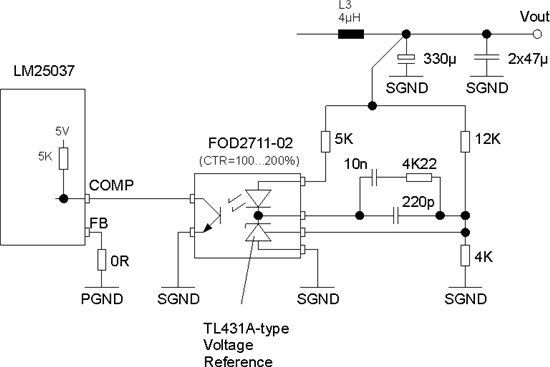Hello,
I'm currently designing a isolated power supply based on the LM25037 evaluation board (about 16...32V input voltage, and 5V/6A output voltage). But the evaluation board lacks an isolated feedback path. There is nearly no information in the LM25037data sheet how to implement it, and it is my first isolated power supply design. The only hint I found in the data sheet is to connect the feedback pin of the LM25037 to GND and connect the opto coupler to the COMP pin instead. This makes me somewhat curious ...
I've tried to implement the feedback according to the attached picture (Its some standard schematic from another isolated converter, and may need some fine tuning).
But with this approach, the output voltage is not regulated. It follows the input voltage. The output load (at Vout) is a simple 1K resistor (5mA at 5V output voltage).
Can you give me some advice or comments to my feedback path implemention please ? Am I totally wrong with my implementation ?
Regards,
Martin.
-

